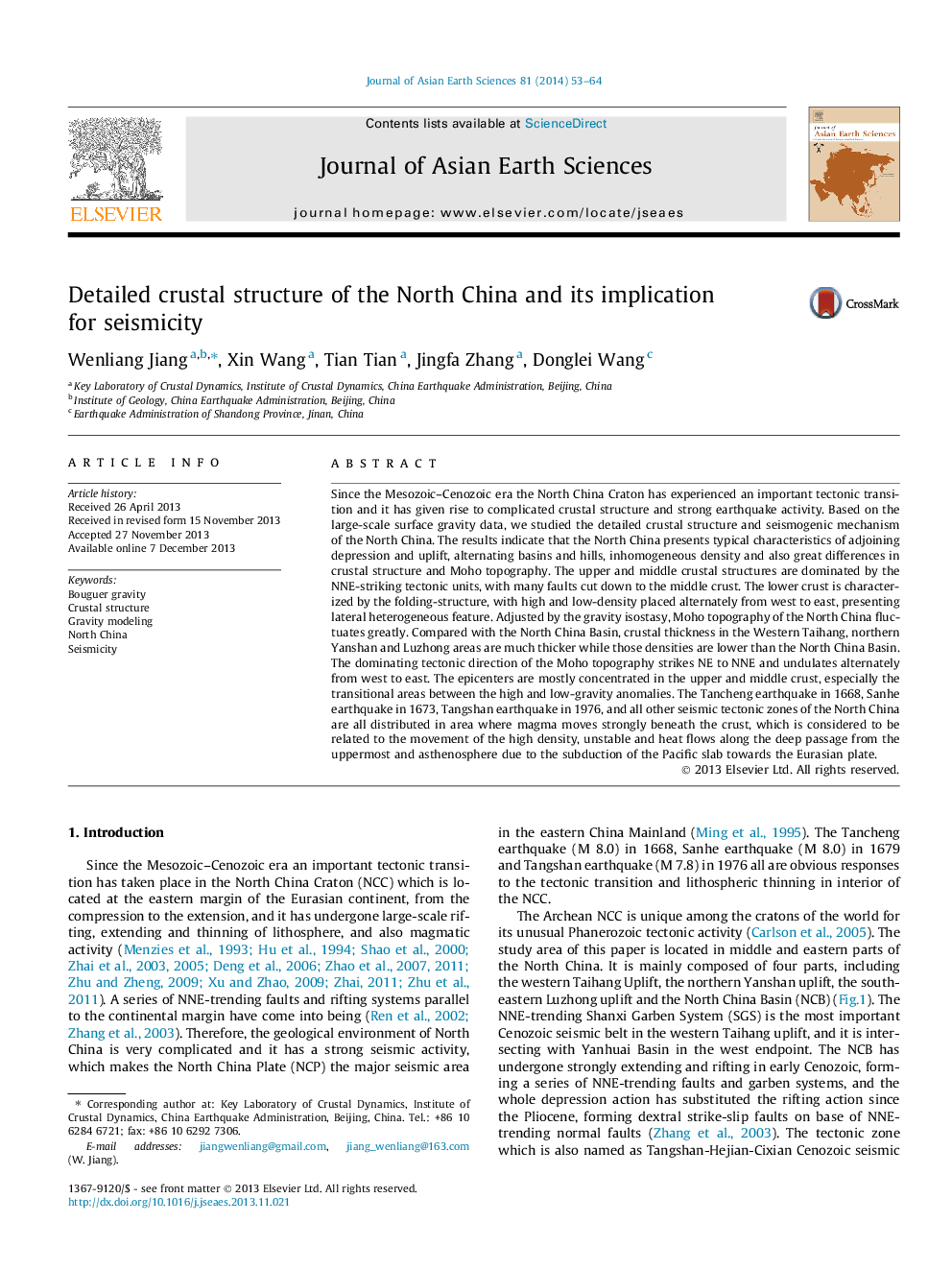| کد مقاله | کد نشریه | سال انتشار | مقاله انگلیسی | نسخه تمام متن |
|---|---|---|---|---|
| 4730812 | 1640387 | 2014 | 12 صفحه PDF | دانلود رایگان |
• Detailed crustal structure and Moho topography of the North China are inverted.
• Three typical gravity models transverse to major active blocks and active faults are constructed.
• Density of the North China presents inhomogeneous feature in lateral direction.
• Strong seismical activity and its tectonic mechanism of the North China are studied.
Since the Mesozoic–Cenozoic era the North China Craton has experienced an important tectonic transition and it has given rise to complicated crustal structure and strong earthquake activity. Based on the large-scale surface gravity data, we studied the detailed crustal structure and seismogenic mechanism of the North China. The results indicate that the North China presents typical characteristics of adjoining depression and uplift, alternating basins and hills, inhomogeneous density and also great differences in crustal structure and Moho topography. The upper and middle crustal structures are dominated by the NNE-striking tectonic units, with many faults cut down to the middle crust. The lower crust is characterized by the folding-structure, with high and low-density placed alternately from west to east, presenting lateral heterogeneous feature. Adjusted by the gravity isostasy, Moho topography of the North China fluctuates greatly. Compared with the North China Basin, crustal thickness in the Western Taihang, northern Yanshan and Luzhong areas are much thicker while those densities are lower than the North China Basin. The dominating tectonic direction of the Moho topography strikes NE to NNE and undulates alternately from west to east. The epicenters are mostly concentrated in the upper and middle crust, especially the transitional areas between the high and low-gravity anomalies. The Tancheng earthquake in 1668, Sanhe earthquake in 1673, Tangshan earthquake in 1976, and all other seismic tectonic zones of the North China are all distributed in area where magma moves strongly beneath the crust, which is considered to be related to the movement of the high density, unstable and heat flows along the deep passage from the uppermost and asthenosphere due to the subduction of the Pacific slab towards the Eurasian plate.
Journal: Journal of Asian Earth Sciences - Volume 81, 25 February 2014, Pages 53–64
